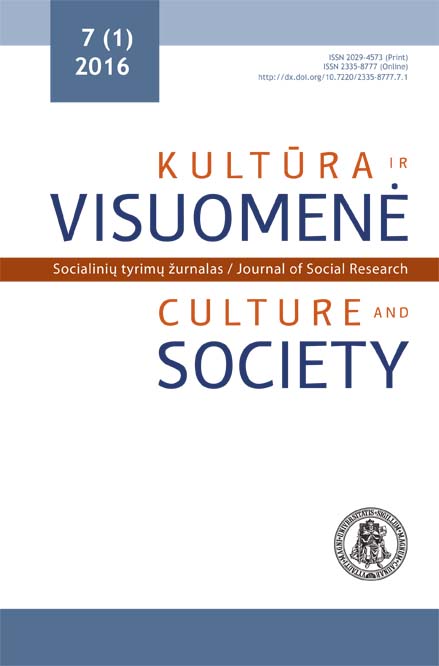Lietuvos pensijų politikos 2009–2015 m. ideologinės tendencijos
Ideological Trends in the Lithuanian Pension Policy in 2009–2015
Author(s): Daiva SkučienėSubject(s): Social Sciences, Sociology, Labor relations, Economic policy, Welfare systems, Family and social welfare, Gerontology, Sociology of the arts, business, education, Economic development, Public Finances
Published by: Vytauto Didžiojo Universitetas
Keywords: Pensions; Pension policy; Pension reforms; Neoliberal/interventionist trends;
Summary/Abstract: After the beginning of the financial crisis in Lithuania and the world, the demand to balance public finances arose in order to safeguard current liabilities due to lower budget revenues. Thus, the pensions constitute the major part of current payments. The issue of pensions remains relevant not only because of the crisis but also because of other socio-economic challenges. The aim of the article is to analyse the direction of the neoliberal or interventionist Lithuanian pension policy during the period of 2009–2015. Earlier studies related to the pension system were mostly focused on the purpose of the pension as well as on challenges caused by socio-economic changes (Eckardt 2005); (Fernandez 2012) new risks (Shuey, O’Rand 2006); prevention of poverty (Foster 2011) etc. The article is based on a qualitative document analysis. The following documents of 2009–2015 are analysed: the Conception of the Pension Reform; the Benchmark Plan of the Reform of Pension System; the Law of Recalculation of Social Benefits and the Draft of Labour and State Social Insurance Juridicaladministrative Model. The methodological approach based on neoliberal/interventionist categories according to Frericks et al. (2009) is utilised in the article. The research findings demonstrate that during the analysed period not pure neoliberal or interventionist but more mixed model of the pension policy prevailed in Lithuania. Socioeconomic challenges such as fiscal pressure, demographical ageing, the demand for a more accurate private pension market supervision, for the decrease of social exclusion and for the assurance of higher financial equality through generations determined this model in the country.
Journal: Kultūra ir visuomenė: socialinių tyrimų žurnalas
- Issue Year: VII/2016
- Issue No: 1
- Page Range: 79-92
- Page Count: 14
- Language: Lithuanian

